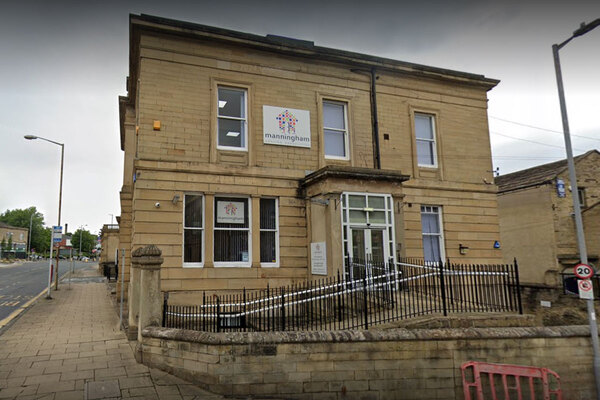Be prepared for future energy efficiency challenges
Housing associations need to be continually thinking about the quality of their stock, says Charley Gibbons at Orbit
Climate change and its devastating effect on the environment, people and communities is one of the most pressing issues we are facing. The urgency of the matter has led the UK to become the first country to introduce a Climate Change Act, which sets legally binding targets to reduce carbon emissions by 80% from the 1990 level by 2050.
More than one-quarter of the UK’s carbon emissions come from its ailing housing stock. Some 625,000 homes per year would need to achieve a minimum EPC rating of B by 2050 if targets in the Climate Change Act are to be met. Apart from the environmental challenge, the human cost of fuel poverty as a result of energy-inefficient housing is huge, affecting about 2.4 million households.
The coalition government’s fuel poverty strategy made the legal commitment to improving the energy efficiency of fuel-poor homes to Band E by 2020, and then band C by 2030. This is a mammoth task as the most recent official fuel poverty statistics show. While progress towards the interim target has been made with band E or above rated properties, only 6.8% of fuel-poor households were living in a band C or above rated property in 2014, according to a Department of Energy & Climate Change report in 2016.
On the whole, although homes owned by housing associations have higher energy efficiency ratings (average standard assessment procedure [SAP] score of 66.2) than their owner-occupied and private rented counterparts (average SAP of 58.7 and 58.8 respectively) according to the National Housing Federation’s Taking Stock – Understanding the Quality and Energy Efficiency of Housing Association Homes report, we cannot be complacent.
Fuel poverty is still an acute problem across our sector. With about one in 10 households estimated to be fuel poor, the situation has been exacerbated by welfare reforms and rising living costs. While imposing energy price caps might make some difference, it remains the case that the most effective way to tackle fuel poverty by far is to improve the energy efficiency of a home.
Improving assets
At Orbit, we are committed to providing warm, affordable and safe homes. In line with Whitehall targets, we will improve all existing stock to EPC band C through our energy improvement programme. To date, we have invested more than £13m to tackle fuel poverty and aim to invest more than £66m by 2030.
There is a sound business case for energy efficiency improvements as part of a strategic approach to asset management, particularly given the challenging environment housing associations have found themselves in.
Analysis of Orbit’s stock clearly demonstrates the business benefits for energy efficiency improvements. Higher energy rated homes have lower repair needs, fewer customer contacts, increased customer satisfaction and lower void turnover. Eradicating mould and condensation issues through improved energy efficiency will save us more than £1.5m alone.
“Higher energy rated homes have lower repair needs and fewer customer contacts.”
As a business, we will be spending almost £2.5bn over the next 30 years to future-proof and safeguard our asset base. It is crucial that we find ways of maximising this huge investment. When it comes to energy efficiency improvements, this calls for new approaches to the way we procure and commission works. Rather than a one-size-fits-all retrofit model, we should be working with the supply chain on the principles of performance outcomes and the expected long-term energy performance of the home. This has the potential to create flexibility and would encourage innovation, resulting in measures that are tailored to both geography and the specific fabric of the home.
Building communities
Inherent to our long-term asset strategy is a commitment to building communities and making places where people can thrive. Placemaking is rooted in the principles of sustainable development, a concept that dominated government and political discourse for much of the New Labour years, and is worth revisiting. The notion of ensuring a better quality life for everyone, now and for future generations, cuts right across our sector’s social, environmental and economic values.
Against that backdrop, the recent Bonfield Review was absolutely right to single out housing associations as having a pivotal role in delivering energy efficiency and renewable energy installations at scale for low-income and vulnerable households.
Not only are we in it for the long haul, we are also increasingly working in multi-tenure communities and so are well-placed to facilitate whole street and area-based retrofit programmes, by working in partnership with key stakeholders.
Innovative approaches linking the prescription of energy efficiency improvements and advice through local authorities and NHS partnerships, co-ordinated by the sector across all tenures, could maximise our impact even further. Devolution and combined authority well-being strategies lend themselves to piloting such an approach.
With housing associations owning and managing about 10% of all homes in England, the sector can make a material difference in tackling the twin goals of cutting carbon and reducing fuel poverty, through future-proofing our asset base, as well as building resilient and sustainable communities.
Charley Gibbons, director of strategy and communications, Orbit
This article was written independently and was commissioned as part of a package sponsored by BBA CIT








